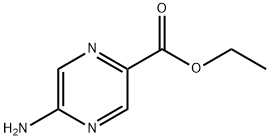Imagine you are in a chemistry lab, analyzing the bonding nature of different compounds. You come across MgCl2 and wonder: Is MgCl2 ionic or covalent?
Derived Questions:
1.What elements are involved in forming MgCl2, and how do they contribute to its bonding nature?
2.Are there any physical properties of MgCl2 that indicate its ionic bonding?
Is MgCl2 ionic or covalent?
Related Products More >
-
- 108-80-5
- USD 50.0000
- 50kg
-
- 108-78-1
- USD 4.5000
- 25kg
-
- 4559-86-8
- USD 750.0000
- 170kg
-
- 77182-82-2
- equest For Quotation
-
- 70131-50-9
- equest For Quotation



 沪ICP备2021018848号-5
沪ICP备2021018848号-5

Reason: MgCl2 consists of magnesium (Mg) and chlorine (Cl) atoms. Magnesium, being a metal, tends to lose its valence electrons to form a positive ion (Mg2+), while chlorine, being a non-metal, tends to gain electrons to form a negative ion (Cl-). In MgCl2, each magnesium ion is surrounded by two chloride ions, forming an ionic bond through electrostatic attraction between the oppositely charged ions.
Derived Question 1: MgCl2 is formed by the elements magnesium (Mg) and chlorine (Cl). Magnesium, as a metal, readily loses its two valence electrons, becoming Mg2+. Chlorine, as a halogen, accepts one electron from each magnesium atom, becoming Cl-. The transfer of electrons leads to the formation of ions, which then bond through ionic forces.
Derived Question 2: Yes, MgCl2 exhibits several physical properties that indicate its ionic bonding. For instance, MgCl2 has a high melting point and is soluble in water, both of which are characteristics of ionic compounds. Additionally, MgCl2 conducts electricity when molten or dissolved in water due to the presence of freely moving ions.
Notes on Usage and Application:
When working with MgCl2 or any other ionic compound, it's important to consider its chemical properties and safety precautions. MgCl2 is a hygroscopic compound, meaning it readily absorbs moisture from the air, which can affect its purity and handling. Additionally, MgCl2 can be irritating to the skin and eyes, so proper protective gear should be worn when handling it. In industrial applications, MgCl2 is used in various processes, such as water treatment, magnesium production, and as a catalyst in chemical reactions. Understanding its bonding nature and physical properties is crucial for safe and effective use.
In \(\text{MgCl}_2\), magnesium (\(\text{Mg}\)) is a metal and chlorine (\(\text{Cl}\)) is a non-metal. Magnesium has two valence electrons and tends to lose these two electrons to achieve a stable noble gas electron configuration, forming a magnesium cation (\(\text{Mg}^{2 +}\)). Chlorine, on the other hand, has seven valence electrons and needs one more electron to complete its octet. So, two chlorine atoms each gain one electron from the magnesium atom, forming two chloride anions (\(\text{Cl}^{-}\)). The strong electrostatic attraction between the positively charged \(\text{Mg}^{2 +}\) ion and the negatively charged \(\text{Cl}^{-}\) ions holds the compound together, which is the characteristic of an ionic bond. This ionic nature is also reflected in the compound's physical properties, such as high melting and boiling points and good electrical conductivity in the molten or aqueous state.